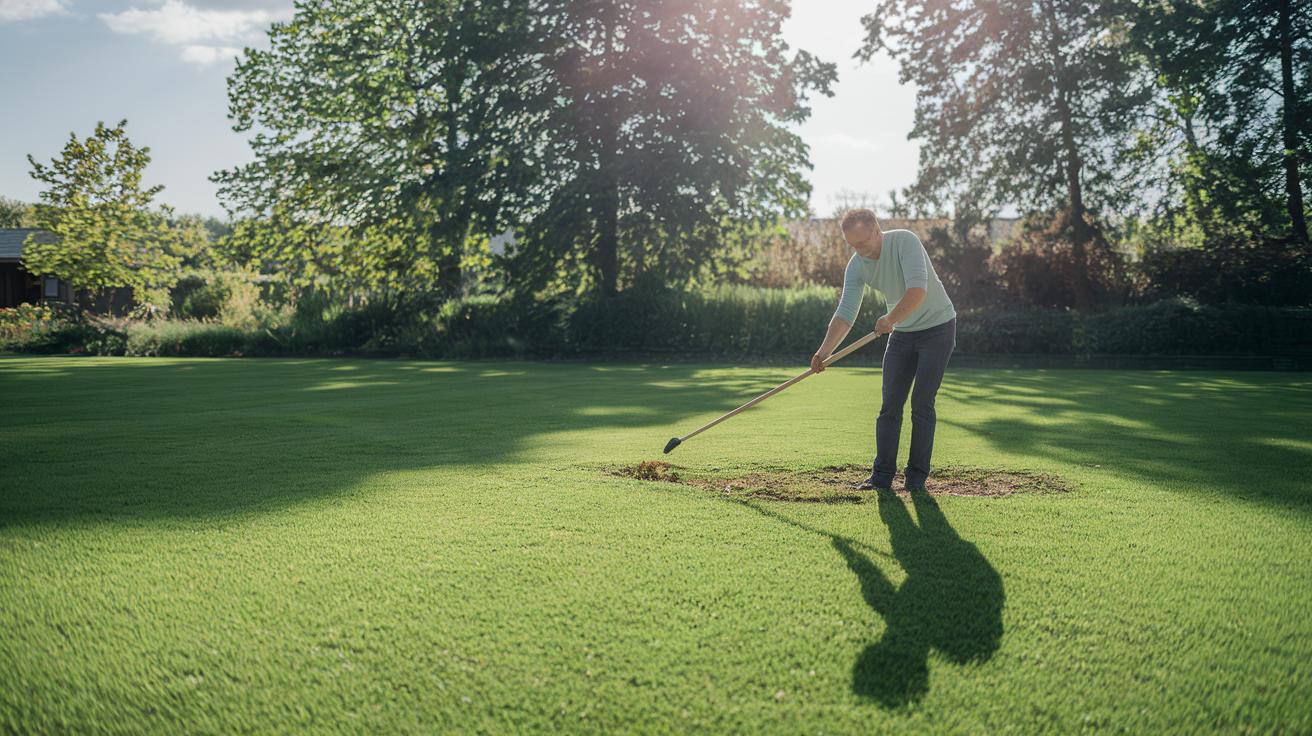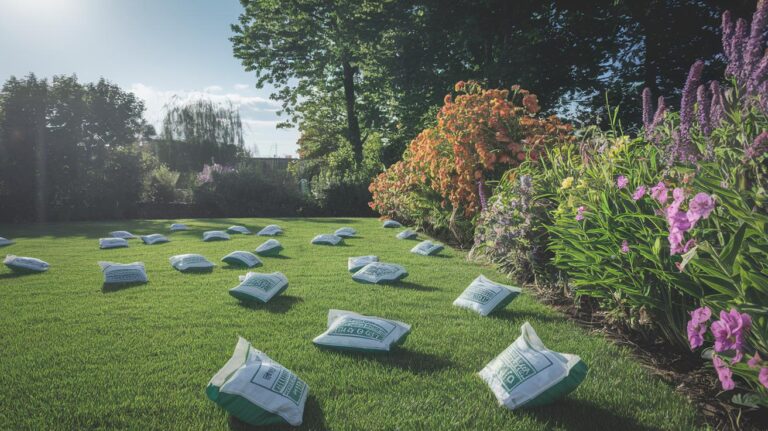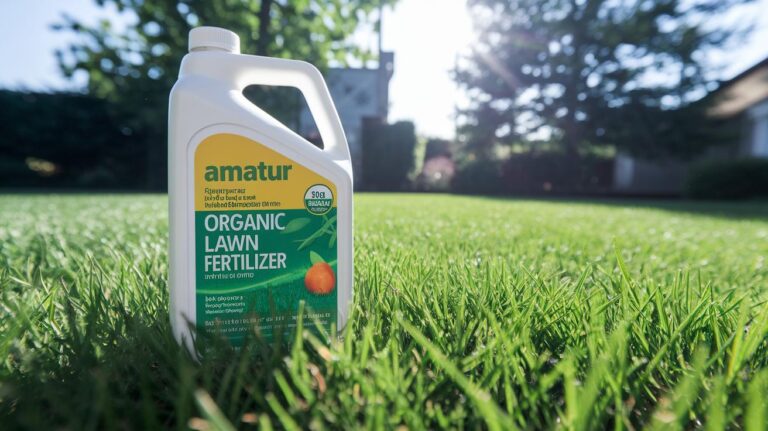How to Use Organic Fertilizer For Lawn Yields Lush Green Turf
Do you think those big bags of synthetic fertilizer (plant food made in a factory) are the only way to get a deep green lawn? I used to feel the same but feeding your grass with organic fertilizer (plant food from natural scraps) can be a real game changer. Organic fertilizer comes from kitchen scraps like old veggie peels, animal manure, and yard waste that’s turned into compost (decayed organic matter).
This natural mix sends gentle nutrition into the soil for weeks. You know, it also welcomes soil microbes (tiny creatures) to munch on organic bits and turn them into grass food. You can almost feel the warm earth crumbling between your fingers as you fluff it up.
Have you ever smelled fresh compost on a sunny morning?
So say goodbye to harsh chemicals and test your soil to see exactly what your grass needs and spread your homemade blend and watch your turf burst to life with soft, cushiony, emerald-green blades. Oops, I got a little compost dust on my shirt, but it was totally worth it. By the way, my dog can’t stop rolling on the lush lawn.
Selecting and Applying Organic Fertilizer for Your Lawn
Organic lawn fertilizer comes from simple, natural bits like kitchen scraps (old veggies and fruit peels), animal manure, crushed shells, and composted yard waste. When you pick organic feed, you skip harsh chemicals and give tiny soil creatures a snack. It’s oddly soothing to feel soil crumble between your fingers. Before you spread anything, do a quick soil test (grab a kit at the garden center or order one online), and it only takes minutes to tell you exactly what your grass needs so you don’t waste time or money.
Here are some perks of organic lawn feed:
- It drips out nutrients slowly so your grass gets a steady snack over several weeks.
- Your soil softens up like a sponge and holds rainwater better.
- Tiny helpers in the soil (microbes) get a boost and turn organic bits into plant food.
- You almost never burn your grass, unlike with fast-acting chemical feeds.
Nitrogen (N) makes grass blades turn bright green. Phosphorus (P) helps roots dig down deep. Potassium (K) lets grass handle heat and drought without flinching. When you pick an organic mix, aim for a 3-1-2 ratio: 3 parts N, 1 part P, and 2 parts K.
Timing is everything. Wait until your soil warms to about 55°F (around late March or April) and again in fall. Spread dry granules by hand or use a spreader, or if you have a liquid feed, just spritz it on. Then give your lawn a light drink right after so the nutrients soak into the root zone.
Nutrient Profiles in Organic Fertilizer for Lawn
When you pick up a bag of organic lawn fertilizer, you see three numbers. They’re the percent by weight of nitrogen (N), phosphorus (P), and potassium (K). You’ll often find N at 2–5%, P at 1–3%, and K at 1–3%.
Nitrogen makes blades deep green and springy underfoot. Have you ever felt that soft bounce under bare feet? Phosphorus helps tiny roots explore the soil. Potassium builds strong cell walls so grass doesn’t wilt when the sun’s blazing.
Most organic mixes use bone meal (ground animal bones) or rock phosphate (mined mineral) for phosphorus. You’ll spot potassium from kelp meal (dried seaweed). Flip the bag over and check the guaranteed analysis (detailed nutrient facts) to hit the right ranges.
Even though these numbers look small next to synthetic formulas, the nutrients release slowly. That steady feed means your turf stays nourished for weeks without stress or burn.
| Source | Primary Nutrient | Role |
|---|---|---|
| Compost (decayed organic matter that enriches soil) | NPK (1–2–1) | Improves soil texture, slow release |
| Bone Meal (ground animal bones) | P (12–15%) | Promotes root growth |
| Blood Meal (dried animal blood) | N (12–14%) | Boosts leaf growth and color |
| Kelp Meal (dried seaweed) | K (4–5%), micronutrients | Helps plants cope with stress, feeds soil microbes |
Your lawn also needs iron (Fe), sulfur (S), and magnesium (Mg). You’ll find them in compost or kelp blends. Iron keeps color rich and helps oxygen flow through leaf cells. Sulfur and magnesium help enzymes turn food into energy so grass bounces back after wear.
And soil pH matters. Aim for 6.0 to 7.0 so nutrients dissolve and reach the roots. If it dips below 6.0, sprinkle lime (crushed limestone) to raise it. If it creeps above 7.0, add sulfur (elemental or pellet) to bring it back down.
Homemade vs Packaged Organic Fertilizer for Lawn Products
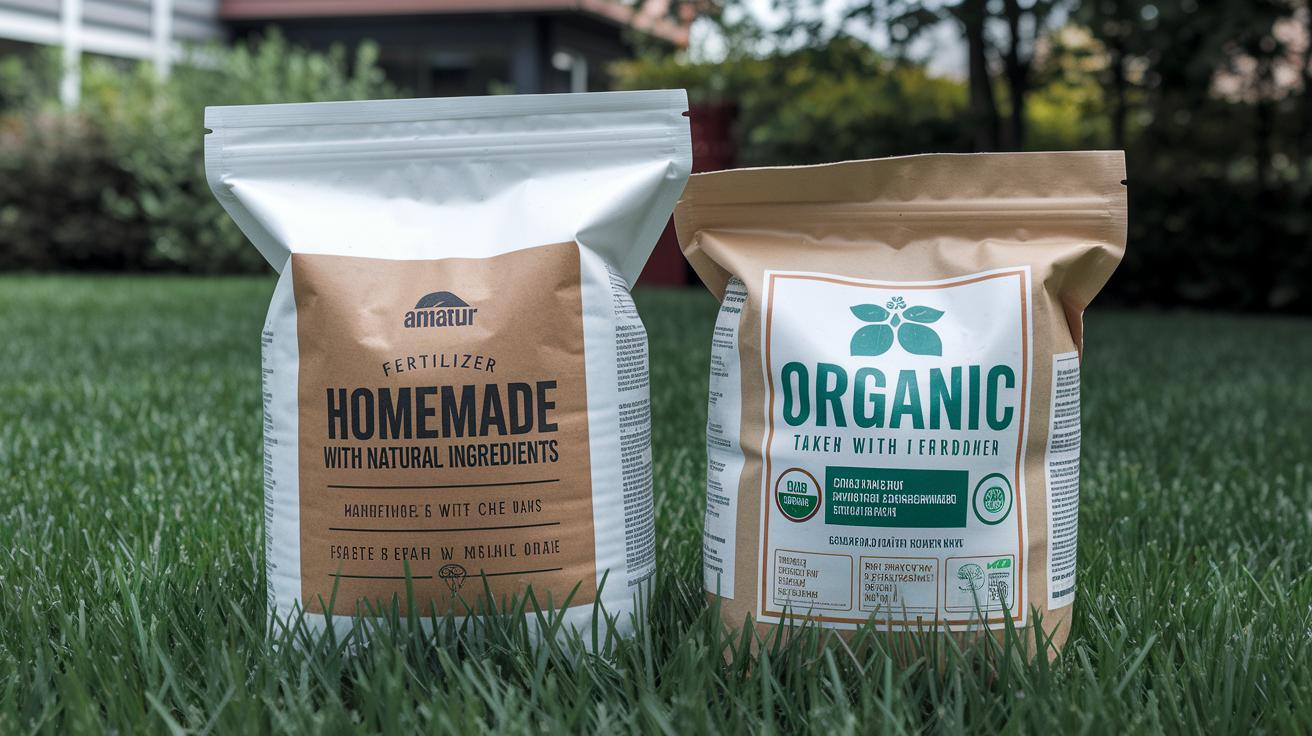
You can mix up your own organic lawn food for almost free. Just grab kitchen scraps, yard trimmings, or fully composted manure (decayed organic matter that enriches soil). Your lawn will get a gentle feed and you might smell that warm, earthy scent right away.
- Compost piles: layer green material (vegetable peels, grass clippings) with brown material (dead leaves, straw). Keep it damp like a wrung-out sponge. Turn it weekly.
- Compost tea: stir one part compost into five parts water. Let it sit 24 to 48 hours. Then spray it on the grass.
- Manure tea: soak well-aged cow or horse manure in water for a week or two. Strain and drench your lawn roots.
- Fish emulsion (liquid fertilizer from fish waste): dilute one part emulsion to ten parts water. Mist your lawn for a quick nitrogen (helps leaves grow) boost. By the way, it smells strong at first, but it fades fast.
These homemade brews feed soil life below the surface. But the nutrient mix can swing wildly. You’ll need to peek and tweak often.
Packaged options deliver more predictable results with less fuss. You just measure, spread, and water.
- Milorganite: slow-release nitrogen that won’t burn grass. It gives off a mild, earthy smell that fades in about ten days.
- Mirimichi Green: balanced slow-release N-P-K (nitrogen-phosphorus-potassium) plus iron. Great for first-timers.
- CarbonizPN-G™ biochar blends: tiny bits of activated carbon plus friendly microbes. They help roots grow strong.
Granular organic lawn fertilizer is easy to spread and feeds for six to eight weeks. Liquid organic fertilizer greens up grass in days but needs precise mixing.
Here’s a quick look:
| Factor | Homemade | Packaged |
|---|---|---|
| Speed | Slow, as ingredients break down | Liquids green up in days; granules feed for weeks |
| Ease of use | Prep in batches and check often | Measure, spread, water |
| Nutrient balance | Varies by scraps or manure source | Clear N-P-K ratios on the label |
| Cost | Almost free if you have scraps | About $15 – $25 per 40-pound bag |
Whether you brew a custom tea or grab a bag off the shelf, both paths can give you a lush, green yard. Pick the one that fits your pace and wallet.
Selecting and Applying Organic Fertilizer for Your Lawn
Have you ever felt the soil under your fingers when it warms to about 55°F on a sunny morning? That’s your cue to feed your lawn organic fertilizer twice a year, once in spring (March to April) and again in fall (September to October).
But first, test your soil in February or March, then again around August or September. Those results tell you what nutrients you’re missing.
Two weeks before you feed, core-aerate (pull out little plugs of soil to ease compaction, when dirt gets too packed) and dethatch (scrape off the dead grass layer that can smother roots). This helps the nutrients sink deep, right down to where the roots can grab them.
By the way, I once skipped core-aeration and the fertilizer just sat on the surface. My lawn was not impressed. Lesson learned.
If you overseed, scatter the seeds first, then sprinkle on the fertilizer right away. Your new grass will get a tasty first meal!
Your lawn will thank you.
Environmental Impact and Safety of Organic Fertilizer for Lawn
Ever noticed how spring rains wash over your yard? Using organic fertilizer (plant food made from natural ingredients) means almost no runoff (rainwater that flows out of the yard) or dirty groundwater (water under the ground). It breaks down right in the soil, leaving no harsh chemicals in stormwater or streams.
Most organic mixes are slow-release (they feed your grass bit by bit). This cuts down on nutrient leaching (nutrients washing away in water). Plus, beneficial soil microbes (tiny living helpers) get a steady snack of organic matter (decayed plant bits). And your turf builds strength from the ground up.
Kids and pets can play right after you spread pet-safe lawn fertilizer (no need to fence off the yard). Our grass feed won’t burn little toes or furry paws. Oops, did I mention my cat loves sunbathing on the soft new grass? Back to safe turf, no toxic stuff gets tracked into the house.
Over time, choosing organic means your family faces fewer man-made chemicals tied to health problems. Your lawn stays lush. And you breathe easier knowing natural ingredients are hard at work beneath your feet.
Organic Fertilizer For Lawn Yields Lush Green Turf
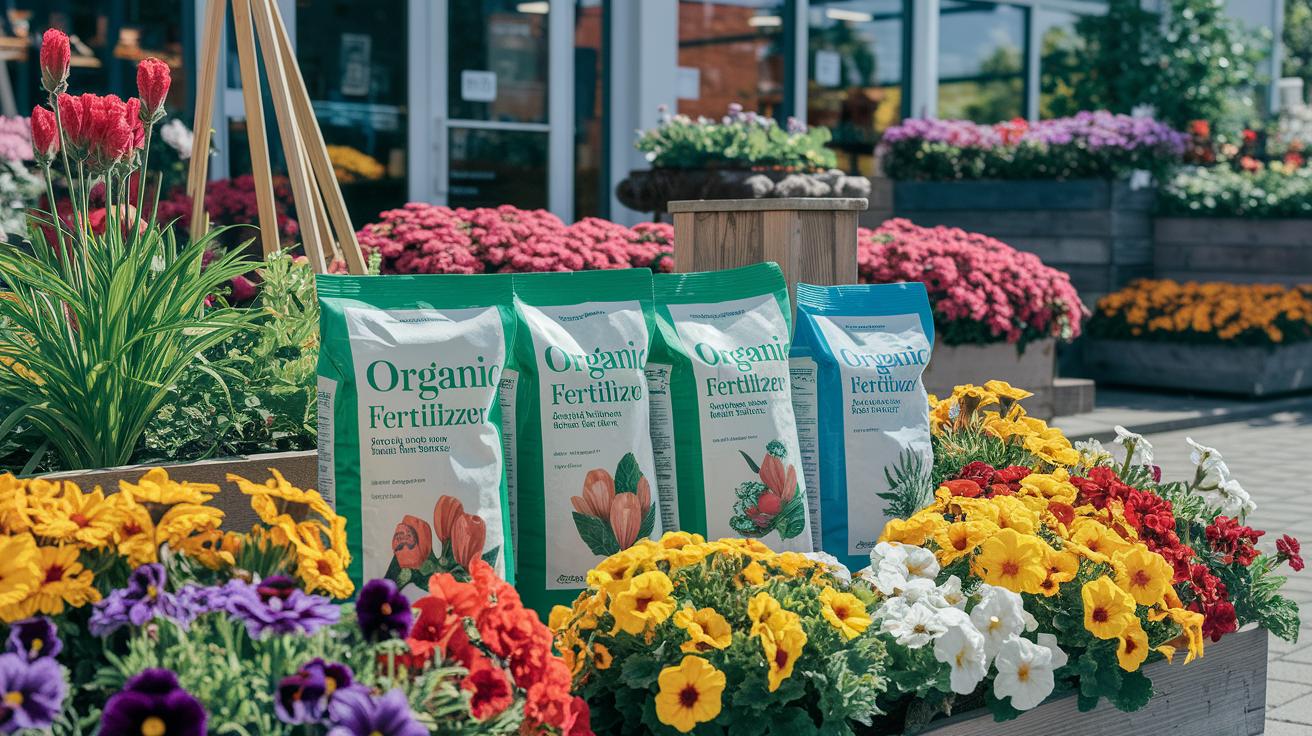
Are you on the hunt for organic lawn fertilizer nearby? I always start at my local garden center where they bag bulk compost (decayed organic matter that enriches soil) for about $20 to $30 per cubic yard. You can almost smell its rich, earthy scent as you load it by the wheelbarrow. It’s perfect when you need to cover big patches without spending a ton.
If you’d rather grab a bag, top brands like Milorganite and Mirimichi Green sell 40-pound sacks for around $15 to $25. I pop into my favorite home improvement store to compare those price tags. And keep an eye on store flyers, those 40-pounders often hit clearance in spring or fall.
Wondering where to buy organic lawn fertilizer online? Specialty garden sites usually list nearby retailers. For Milorganite, just hop over to the manufacturer’s website to find a dealer in your area. Buying in bulk, either multiple bags or by the ton, brings down the per-pound cost, so your turf stays green all season without busting your budget.
Final Words
You’ve seen how to pick the best natural soil boosters, compost, bone meal and kelp, for your grass.
We dug into N-P-K ratios, DIY teas vs top brands, and when to spread them for a lush spring or fall green.
Safety tips and eco-impact showed this method keeps kids, pets, and waterways happy.
And budget-friendly sourcing helps you snag bulk compost or packaged bags without breaking the bank.
Time to get your spreader ready.
Your turf will thank you for choosing organic fertilizer for lawn.
FAQ
How do I naturally fertilize my lawn?
Naturally fertilize your lawn by spreading compost, grass clippings, manure tea, or fish emulsion in spring when soil temperature is at least 55°F.
When should I apply organic fertilizer to my lawn?
Apply organic fertilizer in spring and fall when soil temperature stays above 55°F to support root growth and help turf recover before heat or cold stress.
What are the disadvantages of organic fertilizer?
Organic fertilizers release nutrients more slowly, cost more per pound, may smell if using manure tea, and often need more frequent applications than synthetic options.
Is organic lawn fertilizer worth it?
Yes. Organic lawn fertilizer delivers nutrients slowly, improves soil structure, supports beneficial microorganisms, and creates healthier turf and better long-term soil health, though it costs more and acts slower.
What are some top organic lawn fertilizer options?
Top options include Milorganite granular feed, fish emulsion liquid, compost tea, and balanced blends like Purely Organic Lawn Food or Scotts Natural Lawn Food.
Where can I find organic fertilizer for my lawn locally?
Find organic lawn fertilizer at local garden centers, Home Depot, or online. For bulk compost or manure at better value, check farm supply stores.

